RARE! WWII 1942 "FIRST EDITION" Operation Watchtower (Battle of Guadalcanal) and Operation Cartwheel (New Georgia) U.S. Combat Map

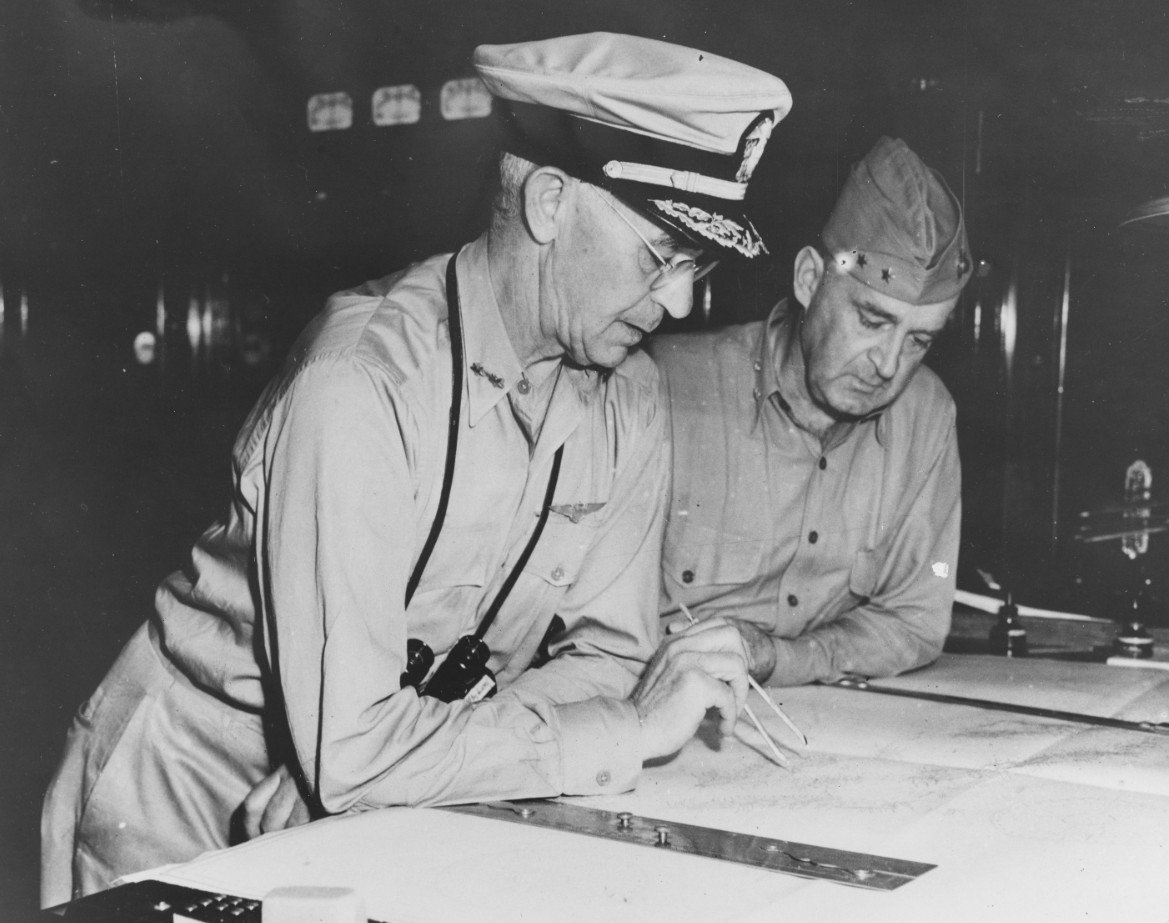


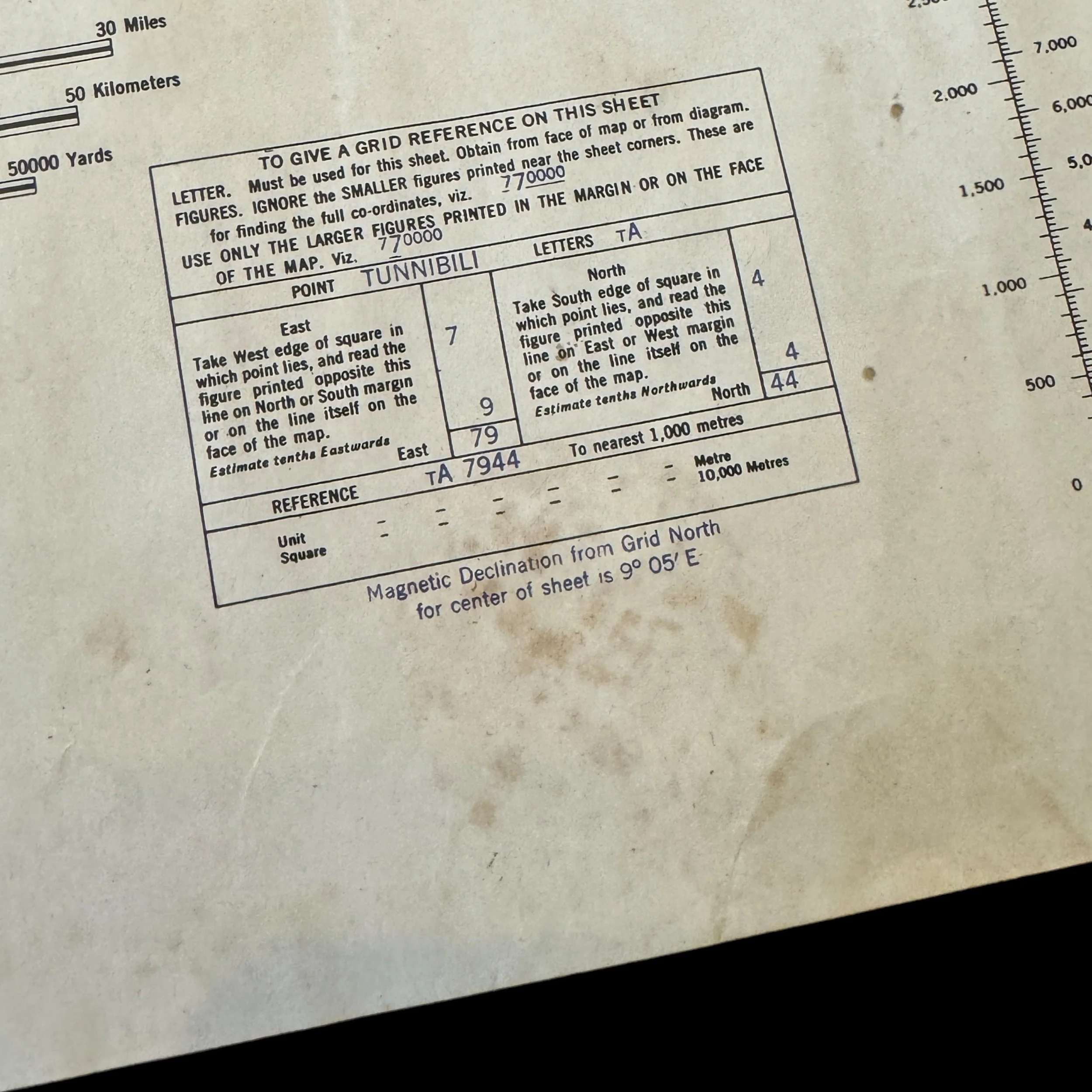



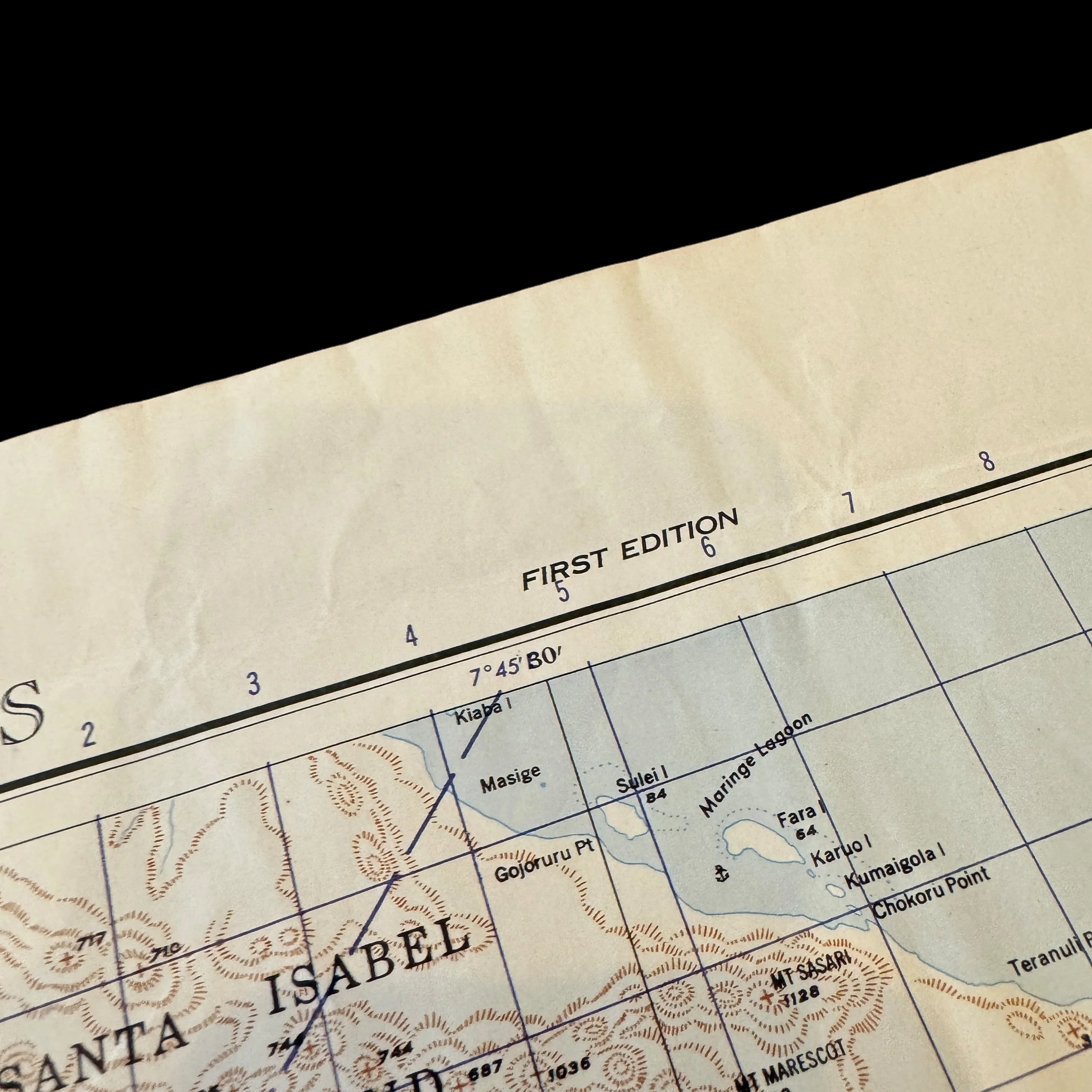
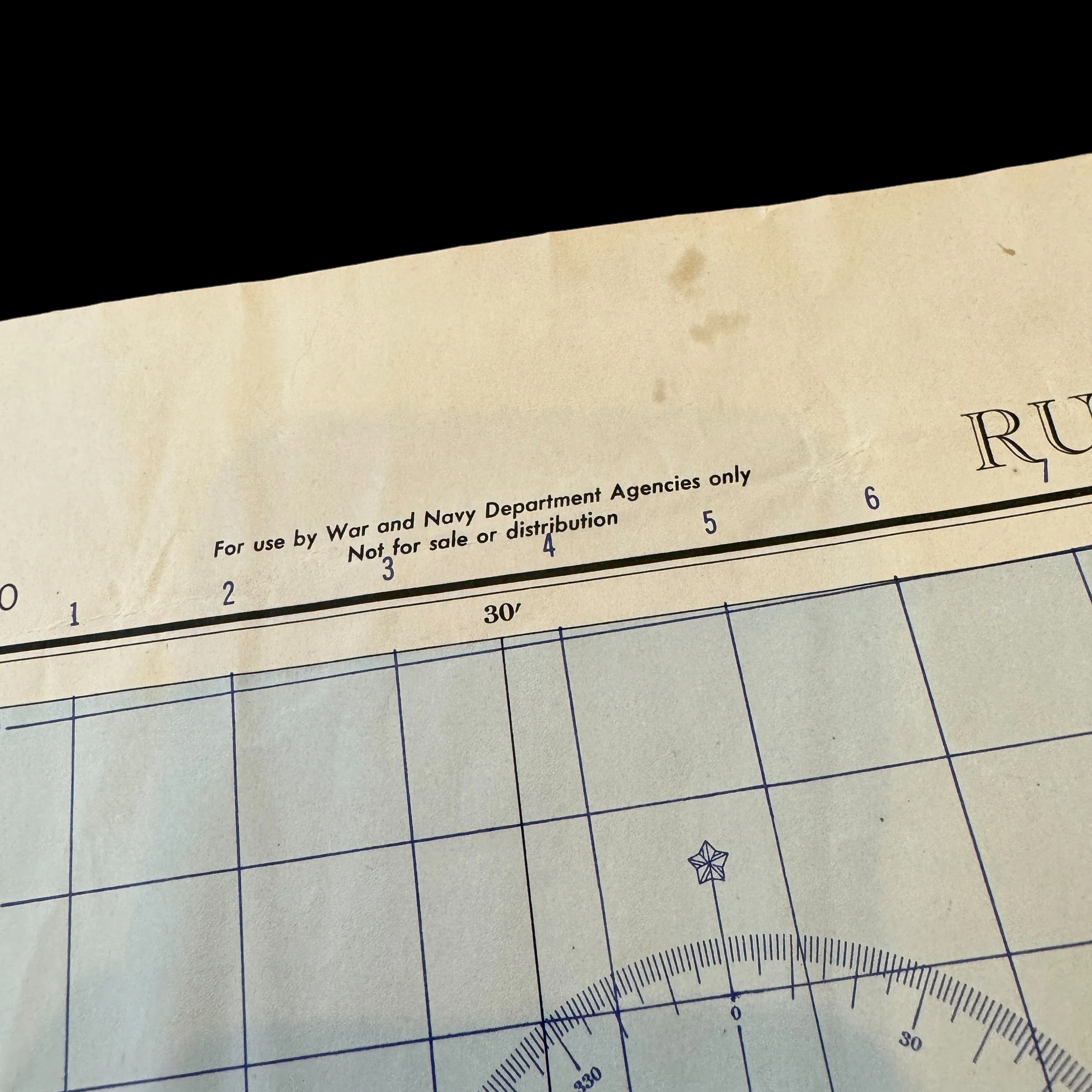



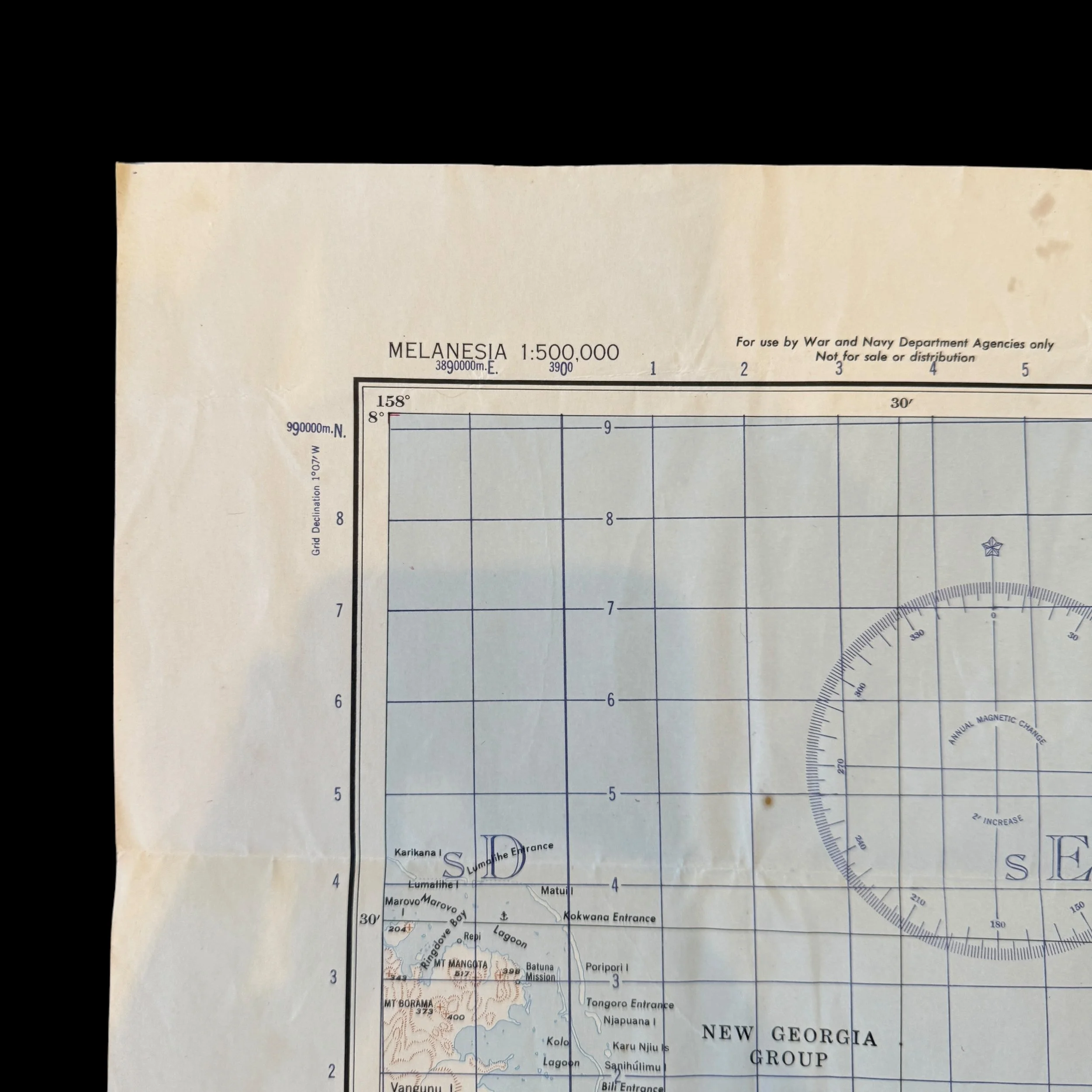











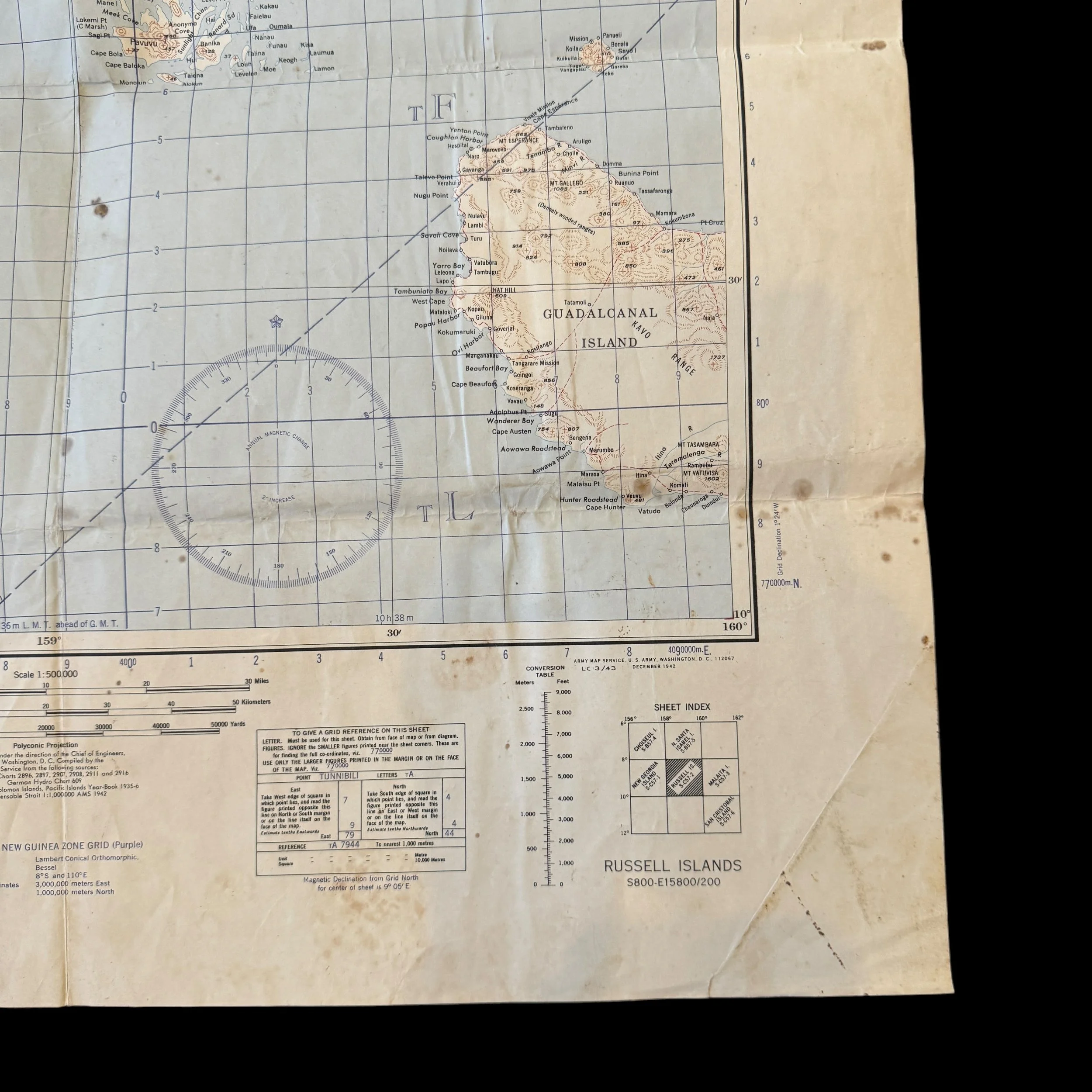

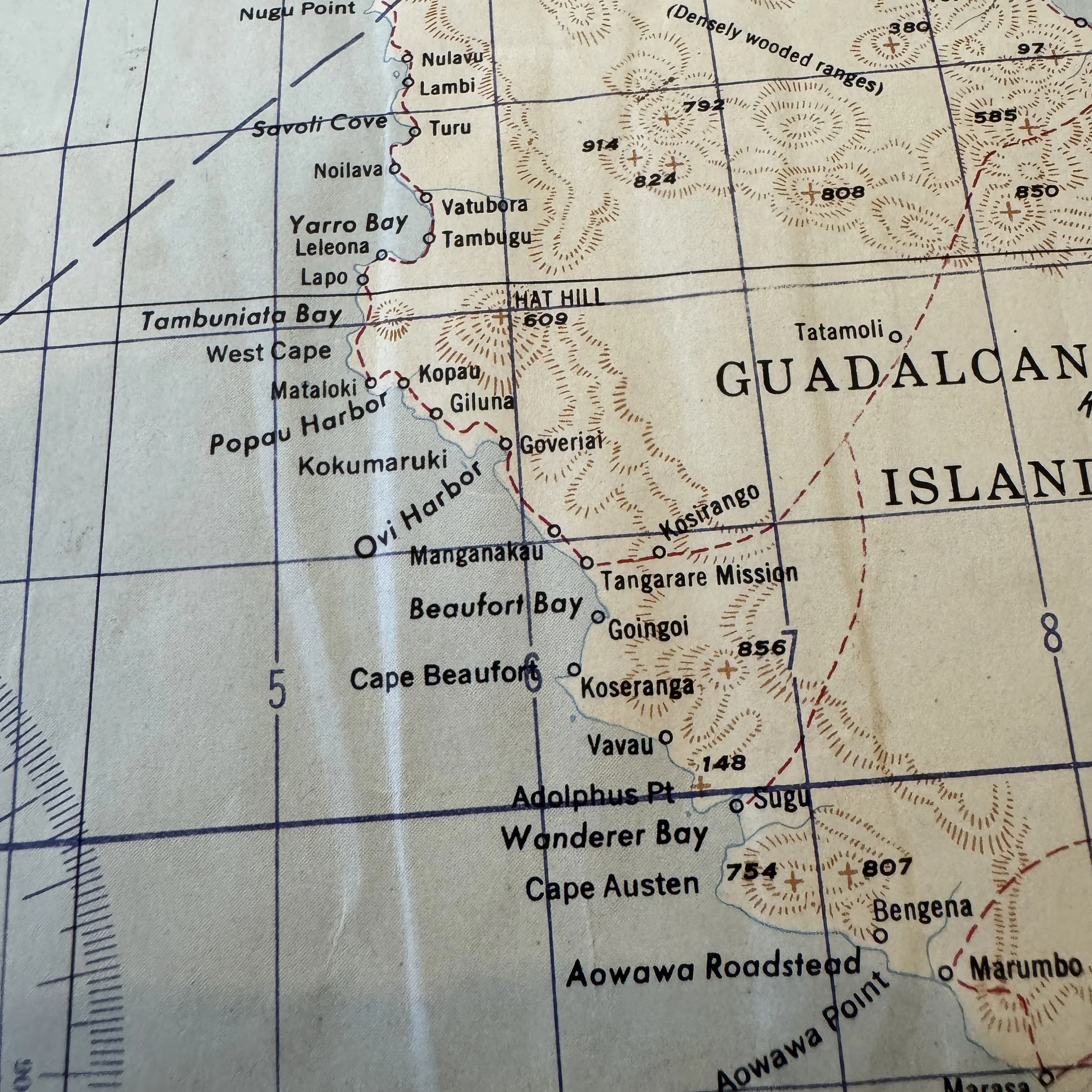

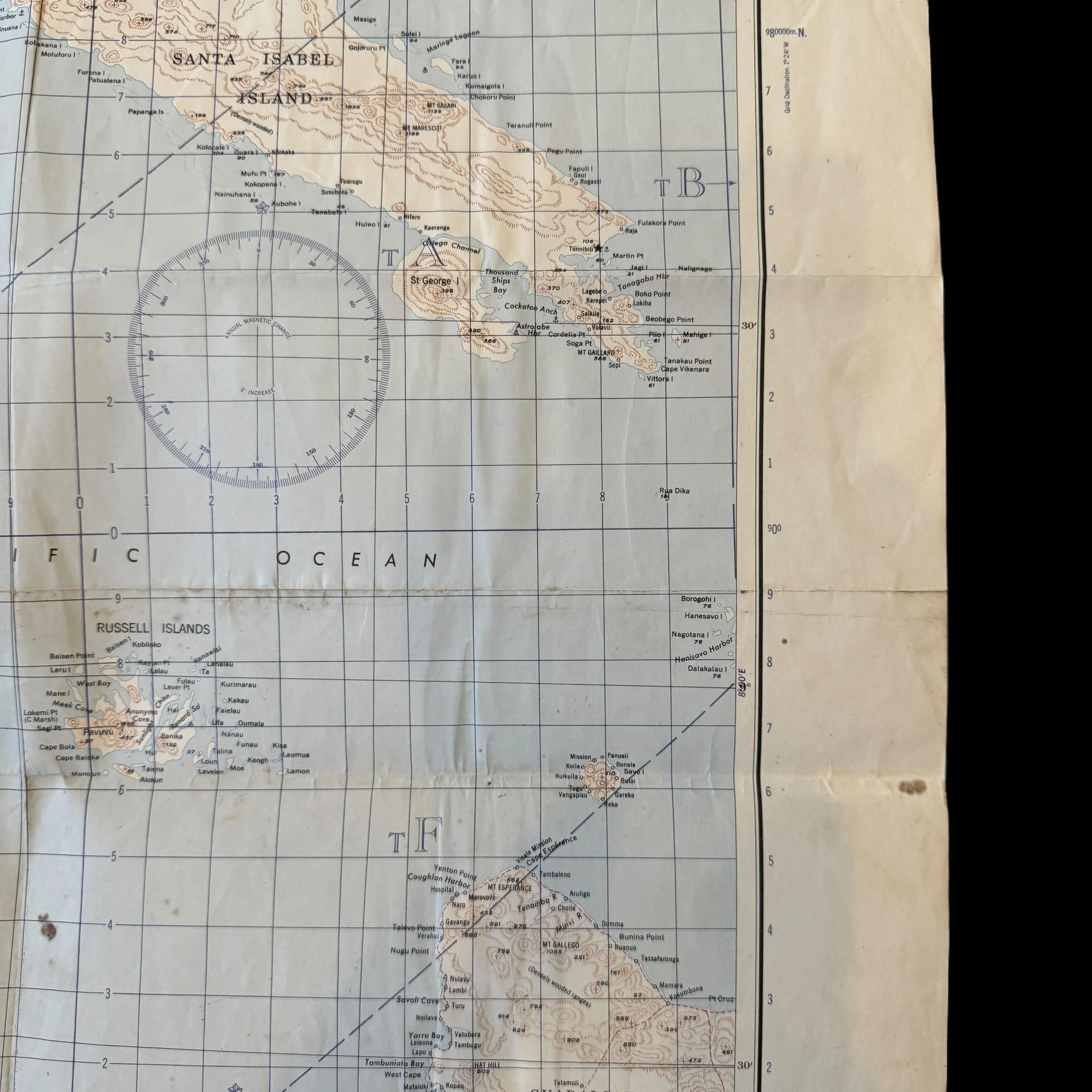

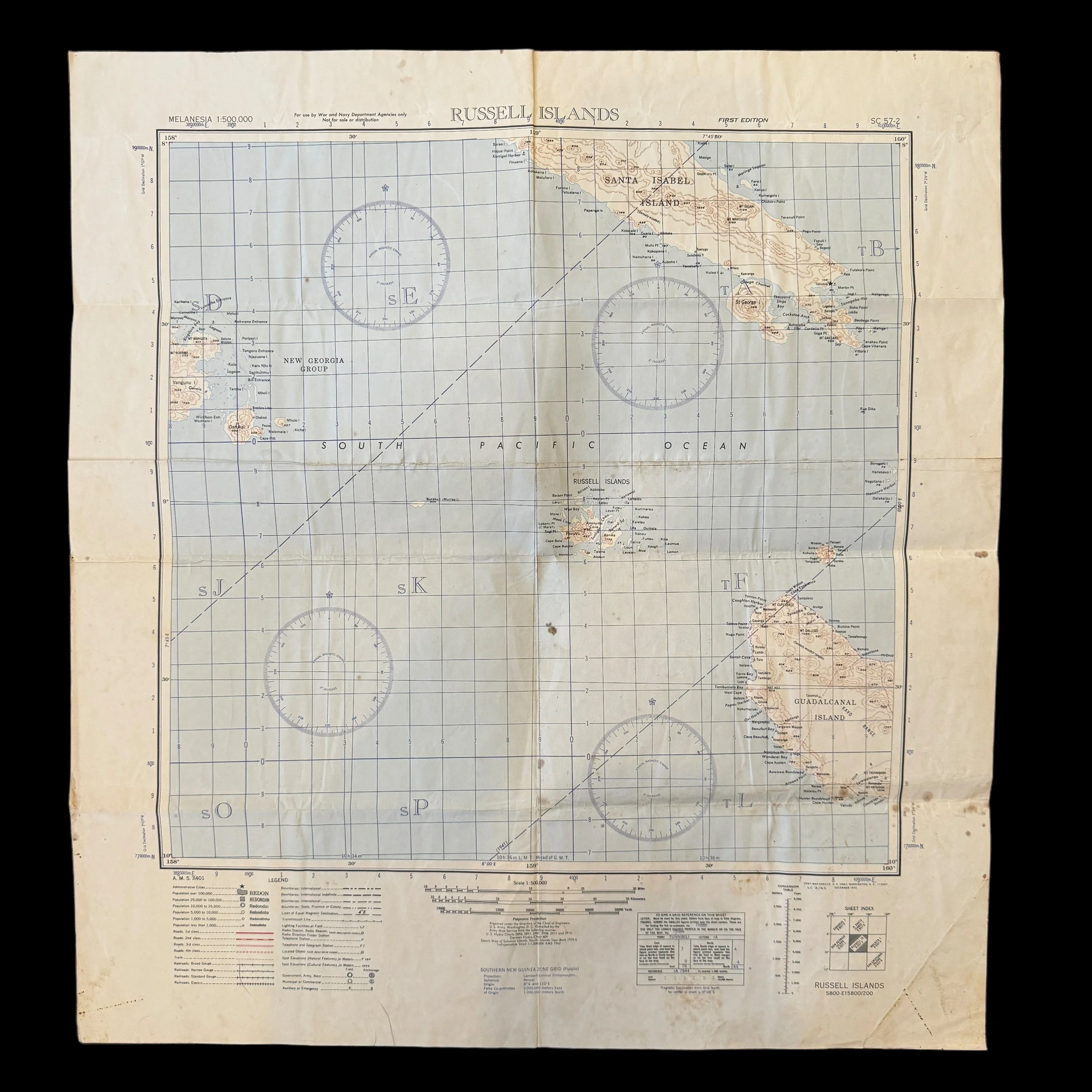
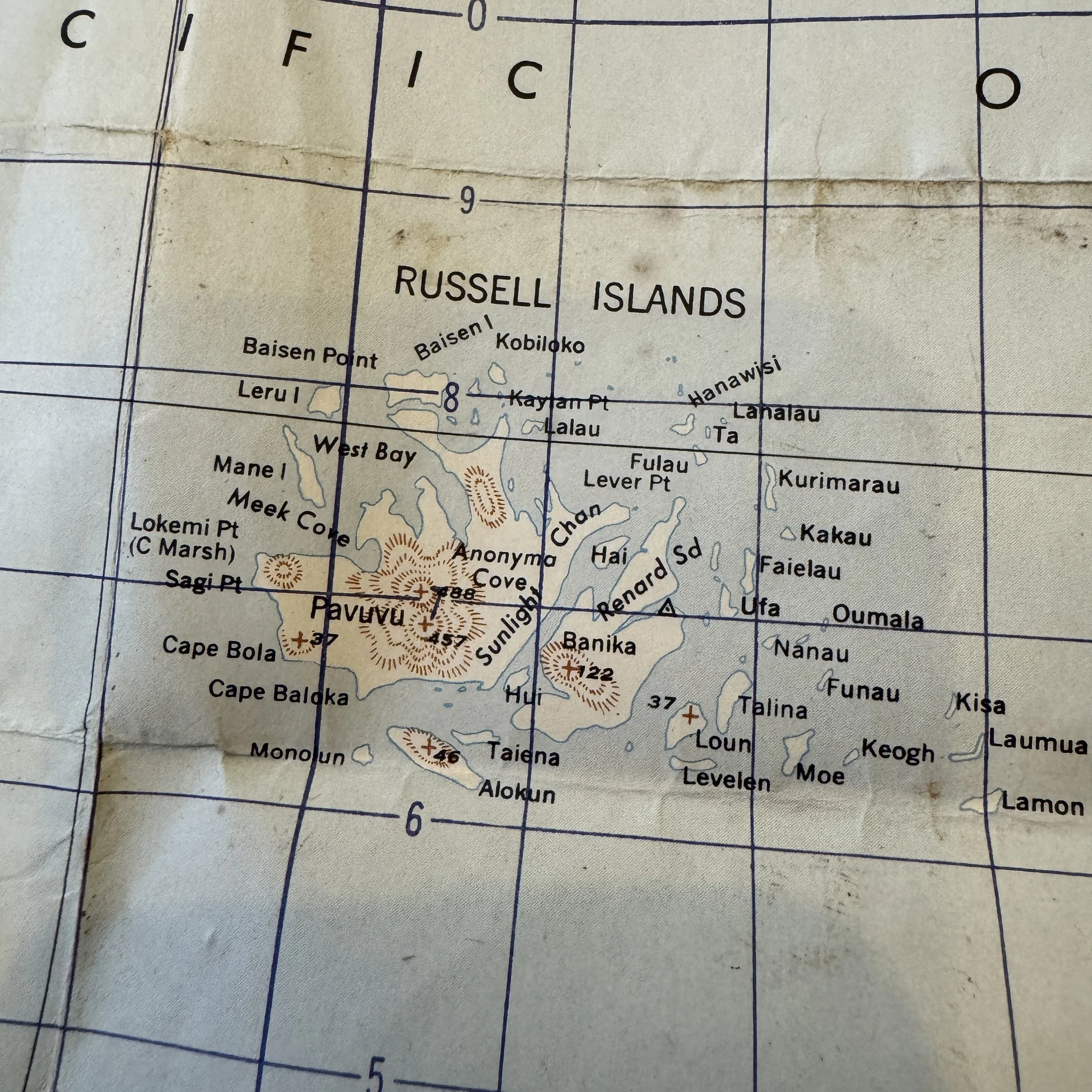
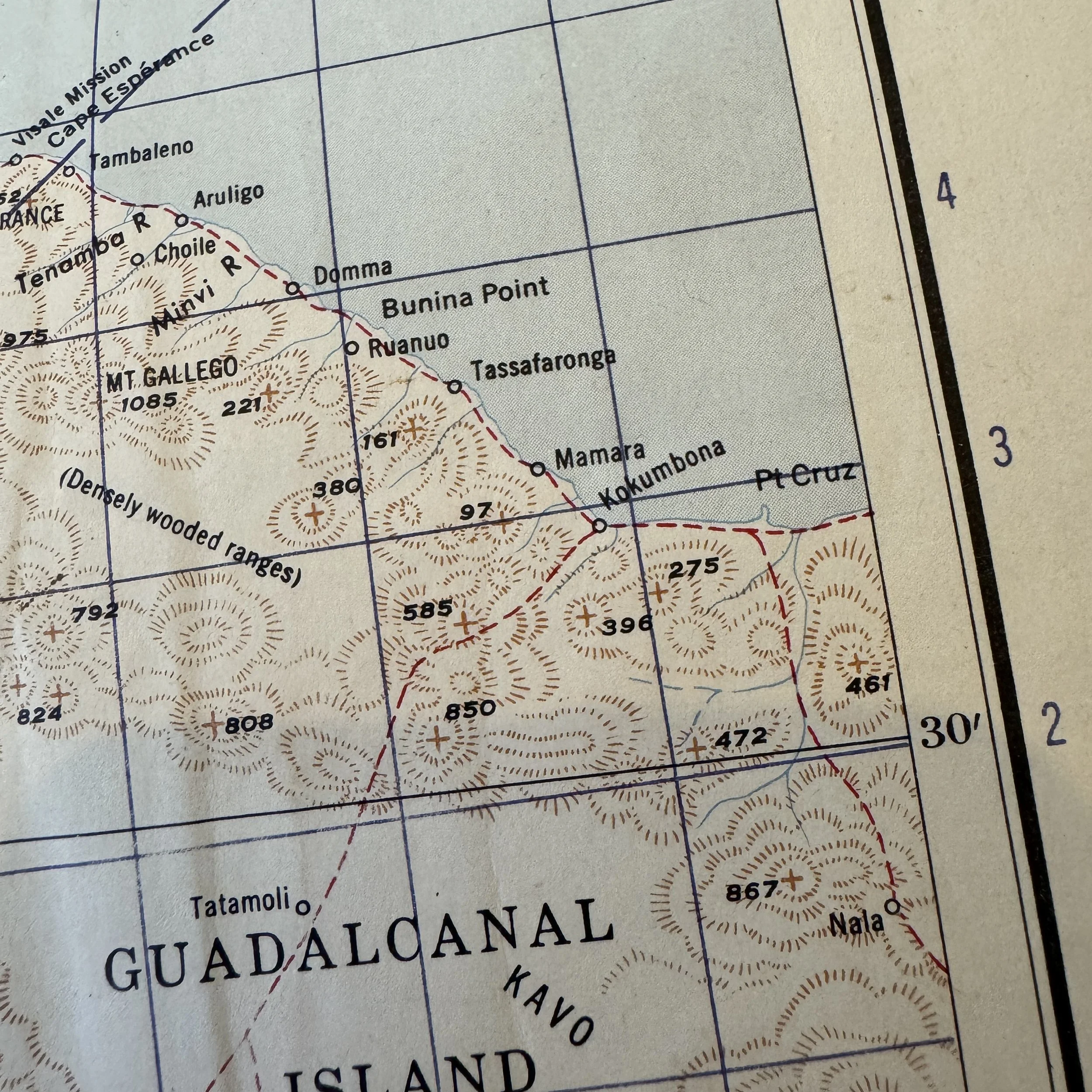
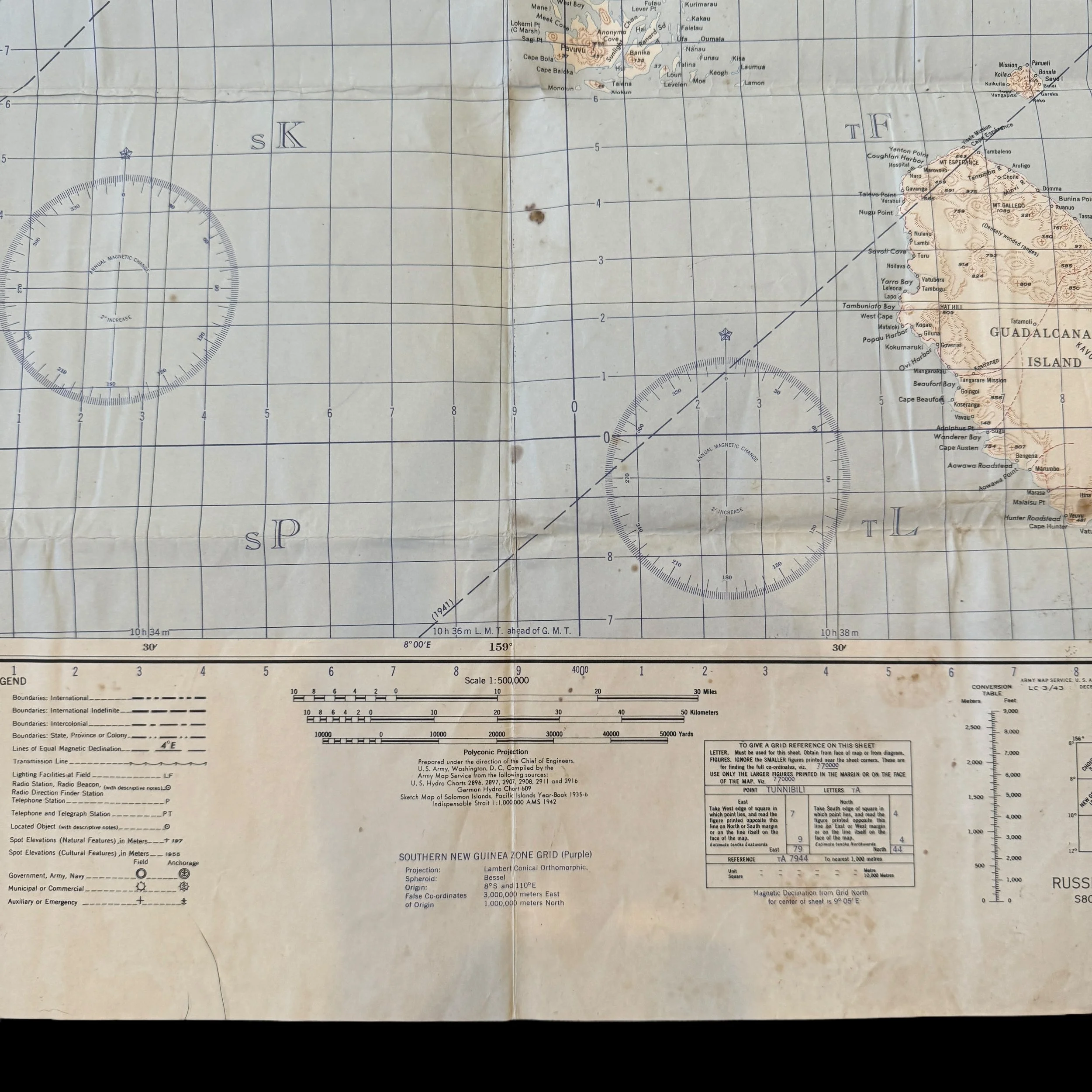
RARE! WWII 1942 "FIRST EDITION" Operation Watchtower (Battle of Guadalcanal) and Operation Cartwheel (New Georgia) U.S. Combat Map
Comes with hand-signed C.O.A.
This incredibly rare and museum-grade WWII Pacific Theater “FIRST EDITION” 1942 dated Battle of Guadalcanal combat map shows heavy theater use as it was used during Operation Watchtower and U.S. operations again the Japanese around Guadalcanal, Russell Islands, and the New Georgia Group. What makes this FIRST EDITION map even rarer is that this map was used during Operation Watchtower (Guadalcanal) and Operation Cartwheel (New Georgia).
The Battle of Guadalcanal, along with the subsequent campaigns in the Russell Islands and the New Georgia Group, represented a critical series of engagements in the Pacific Theater of World War II. These battles, spanning from 1942 to 1943, marked a decisive shift in the momentum of the war, transitioning the Allies from a defensive stance to an offensive strategy aimed at pushing back Japanese forces across the Pacific. This essay delves into the intricacies of these campaigns, highlighting the strategic importance, key battles, and the enduring legacy of these pivotal conflicts.
The Battle of Guadalcanal: Operation Watchtower
The Battle of Guadalcanal, codenamed Operation Watchtower, began on August 7, 1942, and lasted until February 9, 1943. It was the first major offensive by Allied forces against the Empire of Japan and aimed to seize the strategically significant island of Guadalcanal in the Solomon Islands.
Strategic Importance
Guadalcanal's significance lay in its location and the airfield the Japanese were constructing, later named Henderson Field by the Allies. Control of this airfield would enable the Japanese to threaten Allied supply routes between the United States, Australia, and New Zealand. Conversely, capturing it would allow the Allies to project air power across the Solomon Islands, disrupt Japanese operations, and begin a broader counteroffensive.
Initial Landings and Early Battles
The invasion began with a surprise amphibious landing by U.S. Marines, who quickly seized Henderson Field with minimal resistance. However, the Japanese were swift to respond. The initial ease of the landing gave way to a series of brutal and relentless battles as the Japanese launched repeated counterattacks to recapture the airfield.
One of the first major confrontations was the Battle of the Tenaru River (also known as the Battle of Alligator Creek) on August 21, 1942. Japanese forces attempted a night assault on the Marine positions but were repelled with heavy losses, demonstrating the fierce resolve of the American defenders.
Struggle for Henderson Field
Henderson Field became the focal point of the campaign, with both sides recognizing its strategic value. The Japanese launched several significant attacks, including the Battle of Edson's Ridge (Bloody Ridge) from September 12-14, 1942, where U.S. Marines, under Colonel Merritt Edson, successfully defended their positions against a determined Japanese assault.
Naval engagements also played a crucial role. The Battle of the Eastern Solomons (August 24-25, 1942) and the Naval Battle of Guadalcanal (November 12-15, 1942) were key battles that determined control of the sea lanes necessary for resupplying ground forces. Despite suffering heavy losses, the Allies managed to maintain a precarious hold on Henderson Field, thanks in large part to the efforts of the Cactus Air Force.
Turning the Tide
By the end of 1942, the tide began to turn in favor of the Allies. The Japanese, facing severe logistical challenges and relentless Allied pressure, were unable to sustain their efforts to retake the island. In January 1943, they decided to evacuate their remaining troops from Guadalcanal, effectively conceding defeat. The campaign officially ended on February 9, 1943, marking the first significant strategic victory for the Allies in the Pacific.
The Russell Islands: Securing the Periphery
Following the success at Guadalcanal, the Allies turned their attention to the Russell Islands, located approximately 30 miles northwest of Guadalcanal. The occupation of these islands was intended to further secure the region and provide additional bases to support operations in the Solomon Islands.
The Occupation
The Russell Islands were occupied by U.S. forces on February 21, 1943, in a largely unopposed operation. The islands were unoccupied by Japanese forces, and the swift and successful landing allowed the Allies to establish bases and airfields quickly. These new positions served as staging areas and logistical hubs for subsequent operations in the Solomon Islands and beyond.
The New Georgia Campaign: Operation Cartwheel
The New Georgia Campaign, part of the broader Operation Cartwheel, aimed to neutralize the Japanese base at Rabaul and pave the way for further advances in the Solomon Islands and towards New Guinea. The campaign focused on the central Solomon Islands, with New Georgia being the primary target.
Strategic Objectives
The main objective was to capture the Japanese airfields on New Georgia, particularly the Munda Point airfield. Control of these airfields would deny the Japanese a significant operational base and provide the Allies with another critical platform for projecting air power.
Key Battles
The campaign began on June 30, 1943, with landings on Rendova Island, which served as a staging point for the assault on New Georgia. The Battle of Munda Point was one of the central engagements, with fierce fighting as U.S. forces attempted to overcome well-entrenched Japanese defenders.
Rendova Island: The initial landings on Rendova faced minimal resistance, allowing the Allies to quickly establish a beachhead and begin preparations for the main assault on New Georgia.
Munda Point: The assault on the Munda airfield was characterized by intense jungle warfare and difficult terrain. The Japanese defenders utilized fortified positions and natural obstacles to delay the Allied advance. Despite these challenges, U.S. forces managed to capture Munda on August 5, 1943, after a month of hard-fought battles.
Viru Harbor and Wickham Anchorage: These locations were also targeted early in the campaign to secure additional footholds and disrupt Japanese supply lines. The capture of these positions facilitated the movement of Allied forces and supplies.
The Aftermath and Strategic Impact
The successful capture of New Georgia and its airfields allowed the Allies to continue their push through the Solomon Islands. The campaign significantly weakened Japanese capabilities in the region and contributed to the broader objective of isolating and neutralizing Rabaul, one of Japan’s most important bases in the South Pacific.
The Battle of Guadalcanal, along with the subsequent operations in the Russell Islands and the New Georgia Group, marked a turning point in the Pacific Theater of World War II. These campaigns showcased the resilience, adaptability, and determination of Allied forces as they transitioned from a defensive stance to a strategic offensive.
The victory at Guadalcanal provided the Allies with a crucial foothold in the Pacific and shattered the myth of Japanese invincibility. The successful occupations of the Russell Islands and New Georgia further consolidated Allied gains and set the stage for future offensives that would ultimately lead to the defeat of Japan.
These battles underscored the importance of integrated operations involving land, sea, and air forces, and highlighted the challenges of jungle warfare and amphibious assaults. The lessons learned and the strategic victories achieved during this period laid the groundwork for the eventual Allied triumph in the Pacific, reshaping the course of World War II and the post-war world.